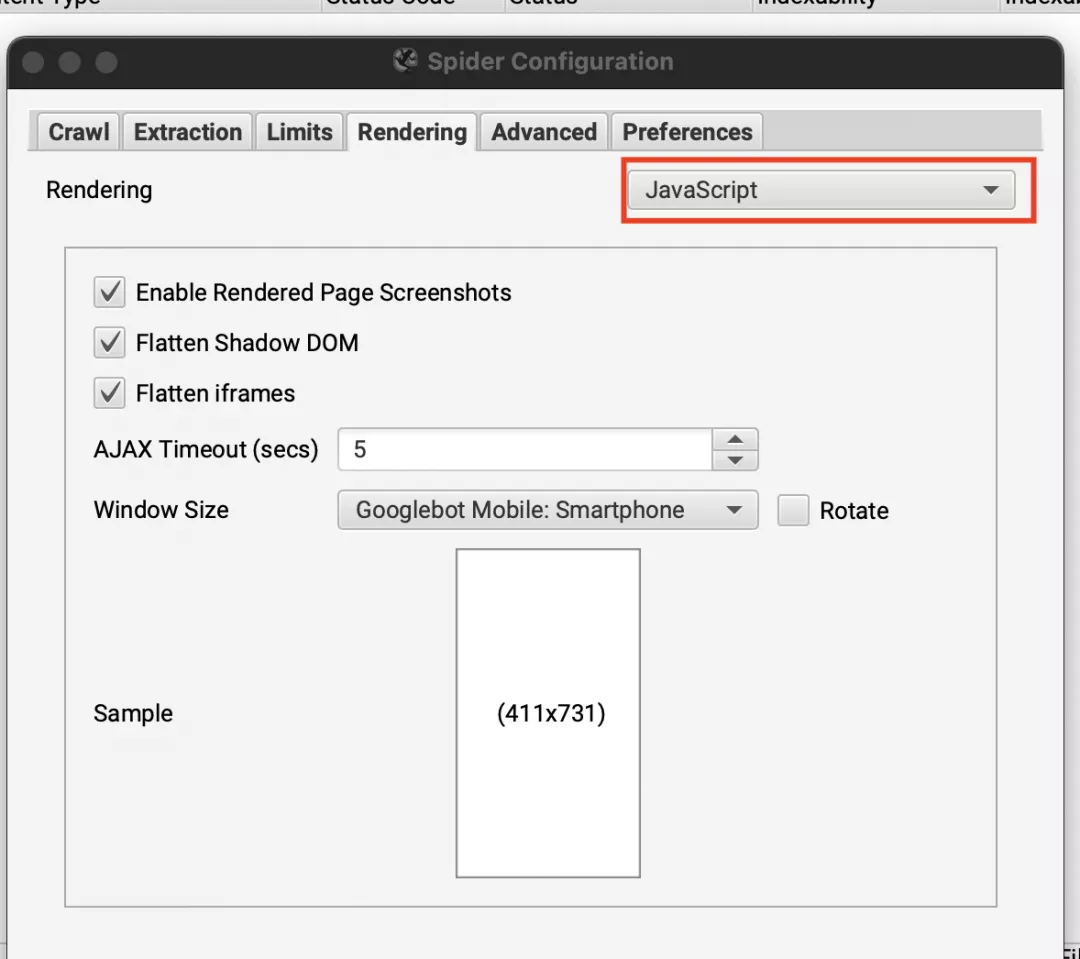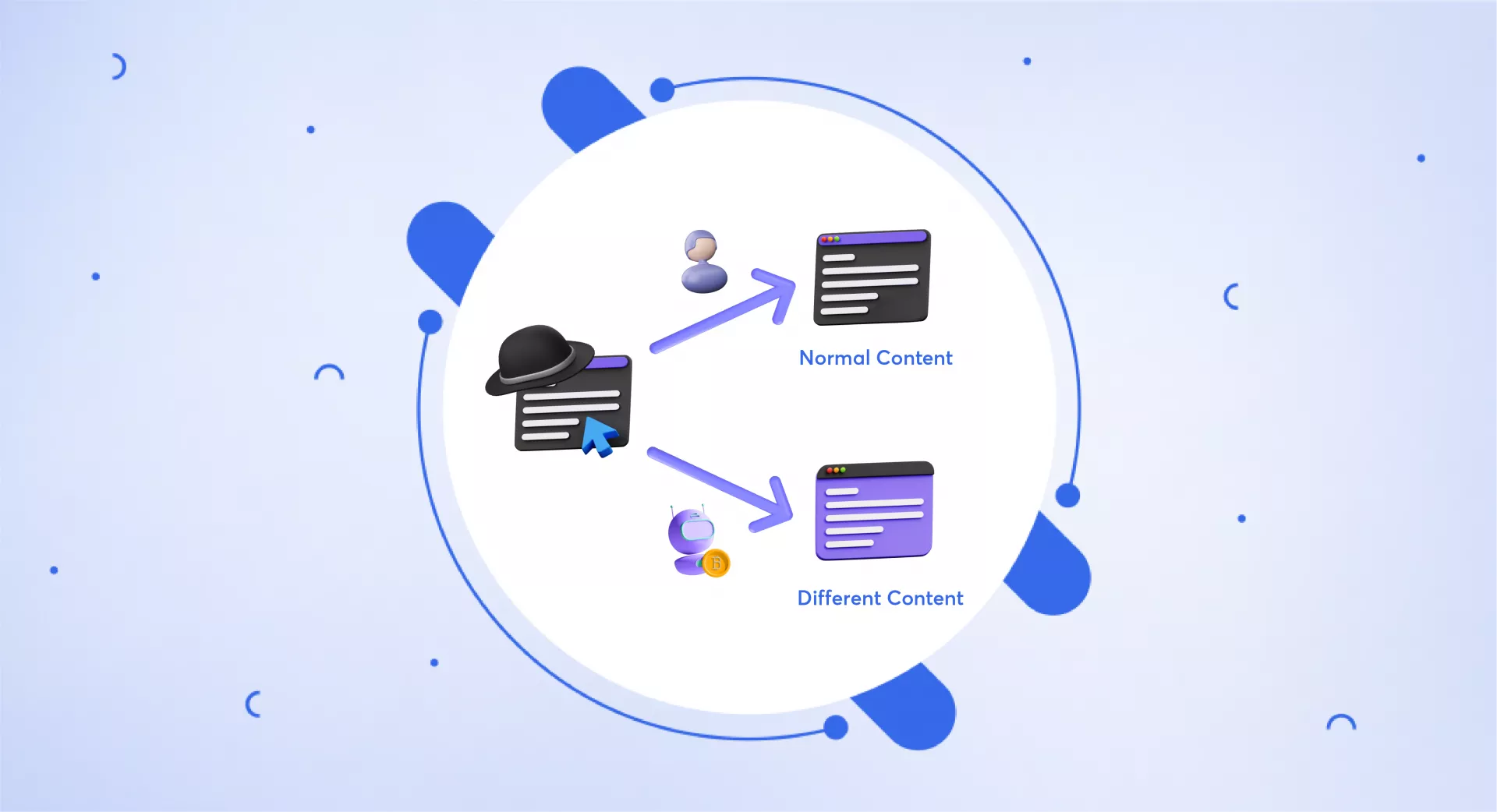What is Cloaking?
Cloaking is a black hat SEO technique that aims to get a high ranking in SERPs by deceiving the search engines and showing different content to both users and search engines.
In cloaking, pages are shown with different content and links either by masking the text behind the same color background or manipulating the HTTP header and IP addresses.
Searchers are diverted to the websites containing the information they were not looking for.
Cloaking is totally against the guidelines of Google Webmaster and may result in penalizing a website.
What are the different forms of cloaking?
IP-cloaking
Internet users have an IP address that is based on their location and internet services. In IP cloaking, different content is shown to the users based on their IP address.
When the IP address of a web crawler is recognized, a different version of a website is shown that is optimized with keyword stuffing instead of keeping real website visitors in mind.
User-Agent cloaking
In user-agent cloaking, a dedicated software or program – commonly called a user agent – is used to assess website visitors.
In this case, a code is sent to the server that will act as a middle point between a searcher and a web browser. The cloaked content is shown every time a visitor is identified as a bot or crawler.
HTTP Referrer cloaking
This method of cloaking is almost similar to user agent cloaking, but here the HTTP referrer header of the browser is identified, and based on this, cloaked content is shown.
On the other hand, if this header is coming from a regular visitor, another page version will be shown.
JavaScript cloaking
In JavaScript cloaking, website visitors are treated in two separate ways. The first way is for visitors with JavaScript disabled – usually, these are search engines.
They are shown the most optimized version of a website to get a higher ranking. The second one is for those with JavaScript enabled– usually regular website visitors. They are served with another version of a web page.
HTTP Accept-Language Header Cloaking
Just like other cloaking methods, this method also recognizes the HTTP accept-language header (it indicates which language a client can understand).
If it is coming from a search engine, then an optimized version of a website will be displayed to it.
Is cloaking good for SEO?
People use the cloaking method to improve the ranking of their websites.
They deceive the search engines by showing an optimized version of a website. This version is different from the one shown to humans.
As you know, Google and other search engines have set specific rules to optimize a website's content and that the pages with the most relevant content may appear in SERPs.
Everyone wants to rank websites higher in search results, but unfortunately, this is not easy to get instant search engine ranking even after meeting the requirements of search engines.
That is why the cloaking method is used to deceive the search engines to get higher rankings by optimizing the web pages specifically for search engines.
This provides a poor user experience where searchers are not served with the same content they were looking for. As a result, it contributes to the de-ranking of a website.
Moreover, the method of cloaking is also against the Google Webmaster Guidelines. Continuous violation of these guidelines may result in a website penalty.
Common cloaking practices
Here are some common practices that webmasters use to cloak the content.
Use of invisible text
To get higher rankings in SERPs, webmasters add different keywords and use them overly on web pages in a way that is hidden from the searchers but is accessible by bots.
Usually, this is done by using the same colour text as of background of a web page. This makes the text invisible to humans but not to bots.
Text-to-HTML ratio
Your website must have a high text-to-HTML ratio as a good SEO practice. That means it should have more content on it than HTML tags.
Some websites only post short articles or blogs, so their text-to-HTML ratio is low. To overcome this problem, they adopt the cloaking method.
As a good SEO practice, your website must have a visible text-to-HTML ratio between 25-70%.
You must have noticed that all high-ranking websites have visible text, which has become more significant after Google’s Panda update – which aims to discourage websites with low-quality content from ranking high in search results.
Flash-based websites
Many website owners still use Flash to build their websites or specific pages – though it is not recommended as per SEO guidelines.
Instead of using plain HTML, these websites create content-rich pages for bots, but searchers are provided with Flash pages.
JavaScript replacements
In this case, different content is shown to both JavaScript-enabled and JavaScript-disabled browsers by manipulating the content by processing JavaScript.
Image websites
The image-containing websites take advantage of cloaking by hiding text behind the images.
This is usually done because the bots are less likely to scan or crawl these images. So to rank higher in SERPs, these image websites cloak their websites with keywords.
How do you know about a cloaked website?
It is important to identify a cloaked website because you might not be safe while using this website.
With various online tools, you can check a cloaked website, i.e. smallseotools, duplichecker, sitechecker etc. These tools will identify if there are any hidden scripts on a website.
You can also spot a cloaked website by looking at the search results. When you type a search query, you will see Google shows you the exact terms in bold text.
If you land on a website and do not find this text, it can indicate a cloaked website.
Besides that, you must also check your website for cloaking because if there is any sort of activity by hackers on your website, they may disguise this activity.
It will negatively impact your website without your knowledge and may put your site at risk of being penalized by Google.
Cloaking is not done deliberately each time, so you must spot the error using site audit tools like Screaming Frog. It will ensure that searchers and bots are visiting the same website version by auditing them.
Is there anything like white hat cloaking?
Some SEOs believe that white hat cloaking exists and there is no harm in doing that. However, Google claims that there is no such thing as white hat cloaking.
He clearly stated that if someone tries to trick or manipulate their system, they take strict action.
How to avoid Cloaking?
After Google’s statement, it is now clear that cloaking in any form is bad and will have a negative impact on your website.
It will result in the de-ranking of a website and may put it on a blacklist by Google. It is ideal to monitor your website for all the elements that may lead to cloaking.
If there is hidden text in JavaScript or CSS, replace it immediately with HTML. Tools like Screaming Frog will help you identify hidden text on JavaScript websites but doing the site audit with the below setting enabled.
Go to Configuration > Spider > Rendering > Change the dropdown from text only to javascript

The bottom line
Cloaking is a black hat SEO tactic that helps grow websites by presenting different content or web pages to searchers and bots.
The cloaking method is against the Google Webmaster Guidelines and may result in a penalty for a website.
To be on the safer side, it is good to monitor your website for any kind of unauthorized and illegal SEO practices.
There is no such thing as white hat cloaking, which is prohibited in any form. Webmasters must rely on improving their website performance and optimizing them under legal grounds.


